STUDENT REVIEW

Canadian
WINTER 2023 QUARTERLY STUDENT MAGAZINE
HONOURING
Video Highlight The Essential John Stuart Mill: Capitalism, Competition, & Choice Blog Post Canadian homebuilding has not kept pace with population growth Student Book Review Socialism Sucks: Two Economists Drink Their Way Through the Unfree World
MAKING THE WORLD RICHER BY
ENTREPRENEURS
EDITOR
Ryan Hill
LAYOUT AND DESIGN
Carolina Wong
PRODUCTION EDITOR
Kristin McCahon
PHOTO CREDITS
iStock, Pexels
To receive a subscription, or to write to us about articles you read in this publication, contact us at:
Canadian Student Review
1770 Burrard Street, 4th Floor
Vancouver, British Columbia V6J 3G7
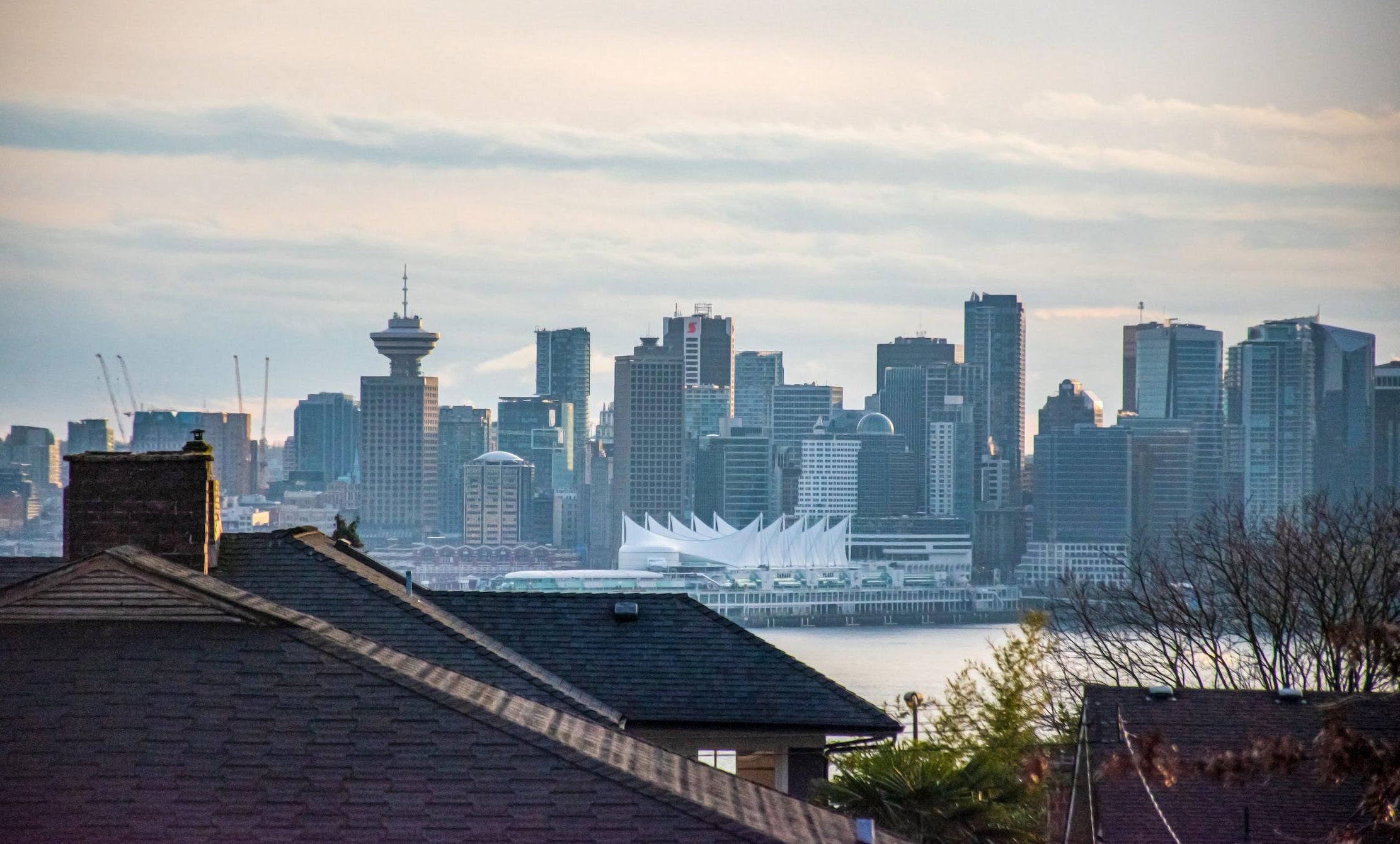
TEL 604.688.0221 ext. 538
FAX
604.688.8539
Our mission is to improve the quality of life for Canadians, their families and future generations by studying, measuring and broadly communicating the effects of government policies, entrepreneurship and choice on their well-being.
EMAIL
Ryan.Hill@fraserinstitute.org
Copyright © 2023, the Fraser Institute
DATE OF ISSUE
Winter 2023
ISSN 1707-116X (online edition)
Canadian Student Review is sponsored by the Lotte & John Hecht Memorial Foundation.
Canadian Student Review is published by the Fraser Institute. The views contained within are strictly those of the authors.
FRASERINSTITUTE.ORG | CANADIAN STUDENT REVIEW 2
18 05
WINTER 2023
4 Welcome Message
5 The Fraser Institute Blog Post #1 Senior Fellow Kenneth P. Green discusses the tradeoffs of Canada’s net-zero plan.


8 Video Gallery
This video from The Essential John Stuart Mill highlights one of J.S. Mill’s most important contributions as a philosopher and economist.
9 The Fraser Institute Blog Post #2 Researchers Josef Filipowicz and Steve Lafleur highlight the role Canada’s slowed homebuilding rates have had on the overall Canadian housing market.
12 Infographic
Check out a recent infographic which highlights the growing debt burden for Canadians.
13 The Fraser Institute Blog Post #3
Fraser Institute Senior Fellow Livio Di Matteo discusses challenges that may arise from the Canadian government’s commitment to increased immigration.
16 Student Book Review
Student contributor Samantha Cardenas Aranguren shares her insight on Robert Lawson and Benjamin Powell’s book, Socialism Sucks: Two Economists Drink Their Way Through the Unfree World.
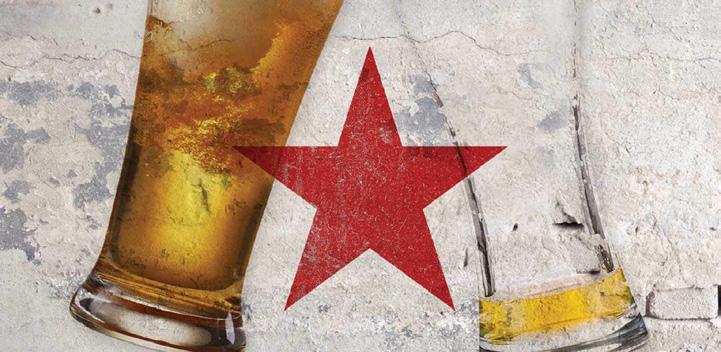
18 Quote Wall
A excerpt from Leonard E. Read’s, I, Pencil.
19 The Fraser Institute Blog Post #4
WINTER 2023 3

Canadian STUDENT REVIEW
TABLE OF CONTENTS 16 19
Professor Carden summarizes an excerpt from the Fraser Institute’s Demographics and Entrepreneurship essay series
WELCOME
Dear Readers:
Welcome to a new and exciting semester!
This issue features an engaging video from our Essential John Stuart Mill series and a review from student contributor Samantha Cardenas Aranguren who shares her insight on Robert Lawson and Benjamin Powell’s book, Socialism Sucks: Two Economists Drink Their Way Through the Unfree World. In addition to these contributions, this issue highlights a recent infographic on the growing debt burden for Canadians which finds that not only has Canada’s projected combined government debt (the federal debt and the provincial debt of all 10 provinces) nearly doubled since 2007/08, the year before the last recession, but the combined debt now equals 74.6 percent of the Canadian economy!
We’re also including a thought-provoking quote from Leonard E. Read, two more exciting blog posts, and more recordings from the Explore Public Policy Issues webinar series for your enjoyment.
If you or someone you know wishes to contribute content to the Canadian Student Review, please have them contact Ryan Hill directly at Ryan.Hill@fraserinstitute.org
Best,
Ryan

OTTAWA’S “NET-ZERO” MISSION WILL CAUSE WIDESPREAD ECONOMIC AND SOCIAL HARM
KENNETH P. GREEN
This year—2023—marks year two of Canada’s netzero plan, which will remake virtually every aspect of our economy and society, if it proceeds according to the Trudeau government’s ambitious plans.
To recap, the Canadian Net-Zero Emissions Accountability Act became law on June 29, 2021, committing Canada to achieve net-zero emissions of greenhouse gases (GHG) by 2050. In March 2022, the federal government published the Emissions Reduction Plan, which requires 45 to 50 percent reductions in GHG emissions from Canada by 2030, boasting separate net-zero programs for buildings, electricity, heavy industry, oil and gas, transportation, agriculture, waste. Simply put, since 2021 Canada has committed virtually every aspect of its existence to achieve a net-zero posture by 2050. And all Canadian policies, regardless of how small or how tall, will be seen as virtuous if they move the needle to net-zero, or as failures if they do not.
We’ve already seen the effect on average Canadians. Under the “waste” component of the 2030 emissions reduction plan, the government
mandated single-use plastics out of existence for most people. The actual bans kicked in at the end of 2022, so if you’re still running on hoarded plastic ware, straws and coffee stirrers, you’ll want to make it last. And yet, an analysis of Canada’s net-zero plastics plan proves it’s a net loser. By the government’s own admission, the bans address a virtual non-problem (99 percent of plastic waste in Canada was already disposed of safely from a public and environmental perspective). But the government will spend more of your money on the program than it will save you in averted environmental, health, or safety damages. And of course, according to predictions from the government itself, substitute materials will actually increase the mass of waste you’ll pay to dispose of and be more harmful to the environment.
On the housing front, the government’s 2030 emissions reduction plan calls for emissions from homes and commercial buildings to fall 42 percent (from 2019 levels) by 2030. This is wildly unrealistic. If you’d like some numbers, CD Howe economists estimate that “total annual retrofit costs, just to households, would run from $4.5 billion to $6.3
THE FRASER INSTITUTE BLOG WINTER 2023 5
SINCE 2021 CANADA HAS COMMITTED VIRTUALLY EVERY ASPECT OF ITS EXISTENCE TO ACHIEVE A NET-ZERO POSTURE BY 2050

1 As of June 5th, 2022.
FRASERINSTITUTE.ORG | CANADIAN STUDENT REVIEW 6
billion.” That’s roughly the cost of building two or three modern hospitals per year.
Finally, net-zero measures are pending for Canada’s oil and gas sector and the agricultural sector (fertilizer), which will put a massive hurt on Western Canada and raise questions about the sanity of some folks in Ottawa. In case you didn’t know, natural gas is critically important for a) producing electricity at affordable costs, b) stabilizing global energy flows and c) displacing more-polluting forms of electricity generation such as coal and wood. And without fertilizer, you can’t grow crops in modern agriculture, certainly not in a country such as Canada.
The Trudeau government has gotten far out over its skis in its frenzied adoption of the netzero emissions by 2050 framework. If this plan is allowed to continue, it will cause economic and social harms that will take decades to remediate. In 2023, if something has the word “net-zero” attached to it, Canadians should say netno-thanks.
Kenneth P. Green is a Fraser Institute senior fellow and author of over 800 essays and articles on public policy, published by think tanks, major newspapers, and technical and trade journals in North America. Mr. Green holds a doctoral degree in environmental science and engineering from UCLA, a master’s degree in molecular genetics from San Diego State University, and a bachelor’s degree in general biology from UCLA.

WINTER 2023 7
ESSENTIAL J.S. MILL: CAPITALISM, COMPETITION, & CHOICE
THIS VIDEO FROM THE ESSENTIAL JOHN STUART MILL HIGHLIGHTS ONE OF J.S. MILL’S MOST IMPORTANT CONTRIBUTIONS AS A PHILOSOPHER AND ECONOMIST.
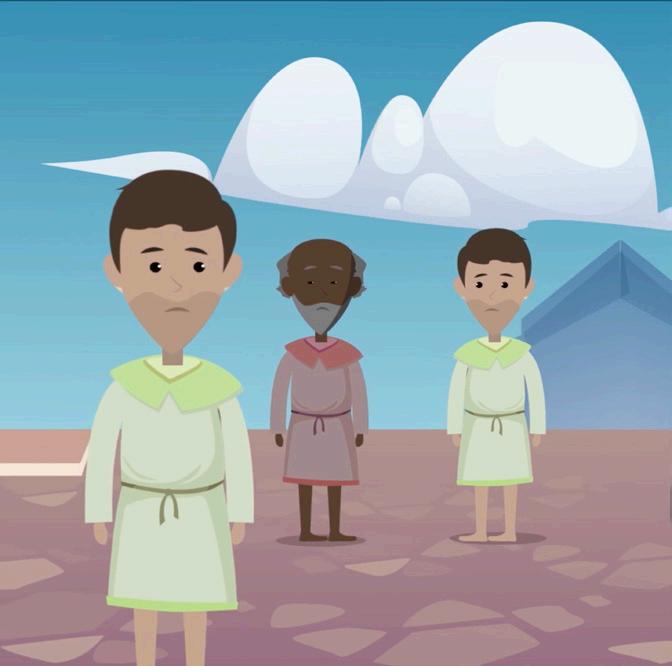
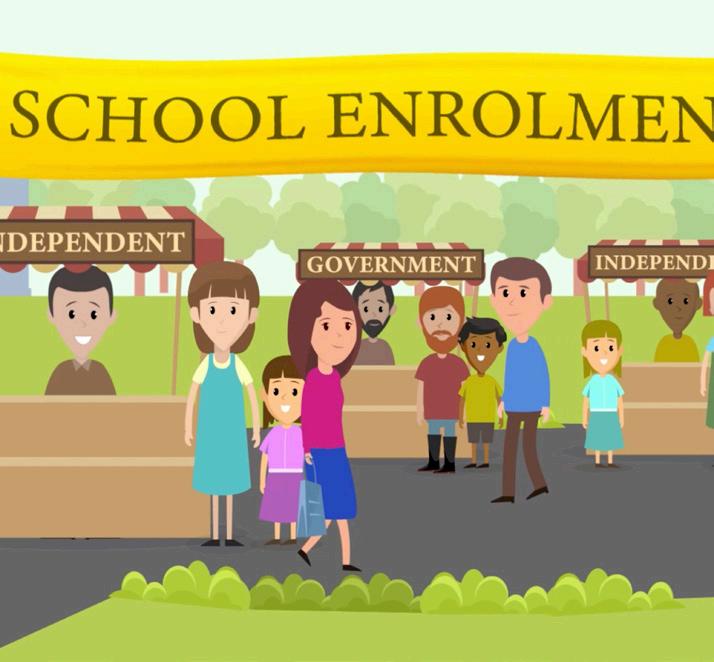
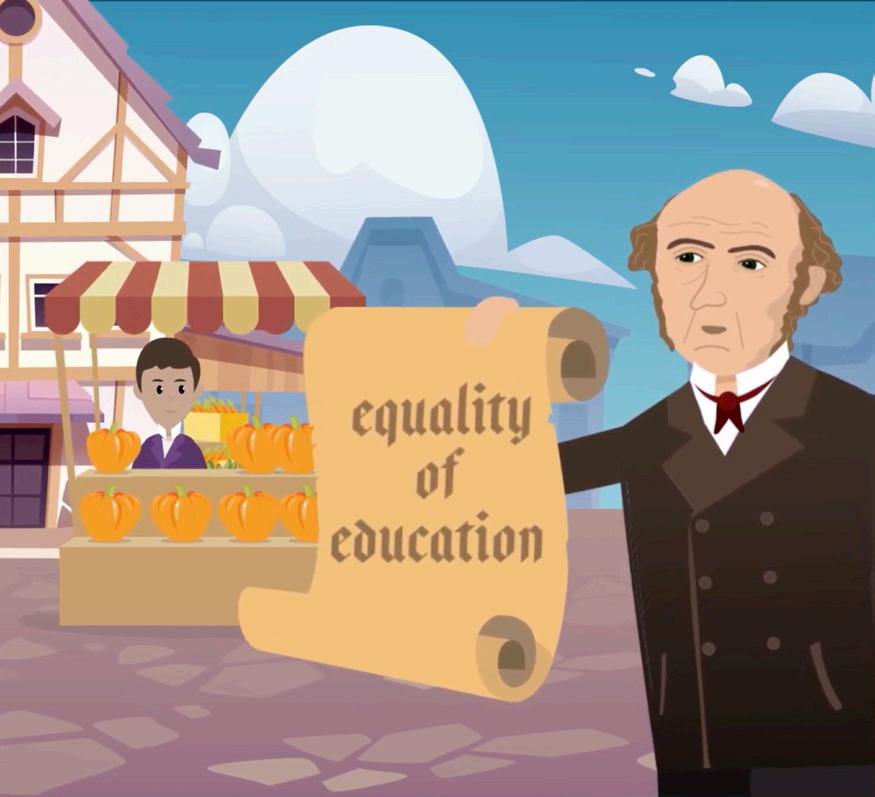
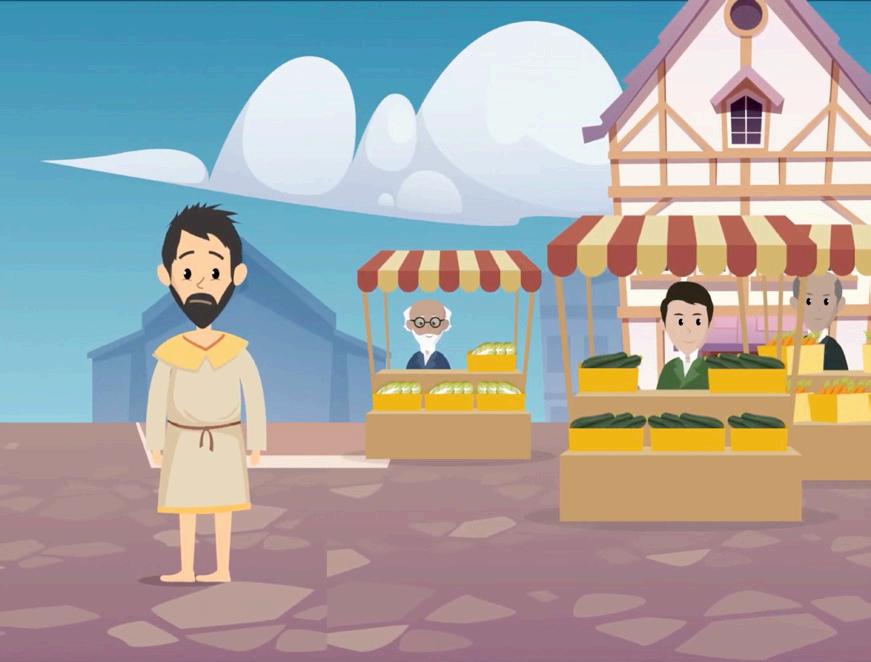
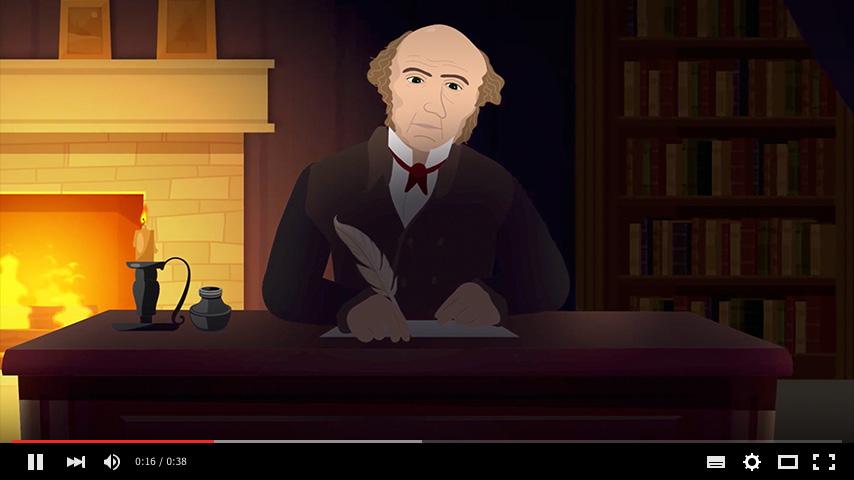
WATCH THE FULL VIDEO HERE VIDEO GALLERY FRASERINSTITUTE.ORG | CANADIAN STUDENT REVIEW 8
CANADIAN HOMEBUILDING HAS NOT KEPT PACE WITH POPULATION GROWTH JOSEF FILIPOWICZ AND STEVE LAFLEUR

Canada isn’t building enough homes. According to recent comparisons, Canada lags its international peers in total homes per person. But another way to highlight current shortages is to compare Canada’s housing supply performance over time.
Consider this. In the 1970s, a new home was built for every 1.2 additional Canadian inhabitants
(on average). In the 2010s, a new home was built for every 2.1 new inhabitants. In fact, more than 200,000 homes were completed in every single year of the 1970s except one. This happened only once in the 2010s, but fortunately looks as though it will be more common in the current decade.
THE FRASER INSTITUTE BLOG WINTER 2023 9
In other words, we used to build a lot more housing in this country than we do now, in both relative and absolute terms. To better illustrate this trend, the second figure shows the ratio of annual housing completions to annual population growth from 1971 to 2022—the full extent of comparable data.

Though this ratio moves up and down in individual years, the overall trend is one of decline by roughly 40 percent over the entire period. Of course, the ratio is driven by both a numerator (housing completions) and a denominator (population growth), meaning that years coupling robust population growth and steady or lagging housing supply bring the ratio down. Conversely, years with steady or higher completions and slow population growth push the ratio up, as was the case during the COVID border closures.
Nevertheless, the broad trend observed over the entire period is one of declining housing completions, both relative to population growth and overall.
This trend should worry Canadians. Shelter is a basic need, and insufficient supply relative to demand means fewer homes available to renters and buyers alike. It also means higher rents and home prices, which is especially damaging to lowincome families and first-time buyers.
But there’s good news. We’ve proven we can balance supply and demand—if more homes were built in the 1970s than today, with a smaller population, then there’s little reason why we can’t do it again. Ultimately, it’s a matter of political will. If Canadian policymakers—at all levels of government—want to restore housing availability and affordability for current and future generations, they should help restore the historical balance between population growth and housing stock growth.
1 As of June 5th, 2022.
FRASERINSTITUTE.ORG | CANADIAN STUDENT REVIEW 10
SHELTER IS A BASIC NEED, AND INSUFFICIENT SUPPLY RELATIVE TO DEMAND MEANS FEWER HOMES AVAILABLE TO RENTERS AND BUYERS ALIKE

Josef Filipowicz is an independent urban and regional policy specialist, and former analyst at the Canada Mortgage and Housing Corporation and at the Fraser Institute’s Centre for Municipal Studies. He holds an M.A. in Political Science from Wilfrid Laurier University and a Bachelor of Urban and Regional Planning from Ryerson University. His work has been featured in numerous news outlets including the Wall Street Journal, Globe and Mail, Toronto Star, Maclean’s, Detroit News, and Financial Post.

Steve Lafleur is an independent public policy analyst located in Toronto, a Fraser Institute senior fellow, and a former Senior Policy Analyst at the Fraser Institute. He holds an M.A. in Political Science from Wilfrid Laurier University and a B.A. from Laurentian University where he studied Political Science and Economics. He was previously a senior policy analyst with the Frontier Centre for Public Policy in Winnipeg and is a contributing editor to New Geography.

WINTER 2023 11
THE FISCAL COSTS OF DEBT-FINANCED GOVERNMENT SPENDING
READ MORE HERE
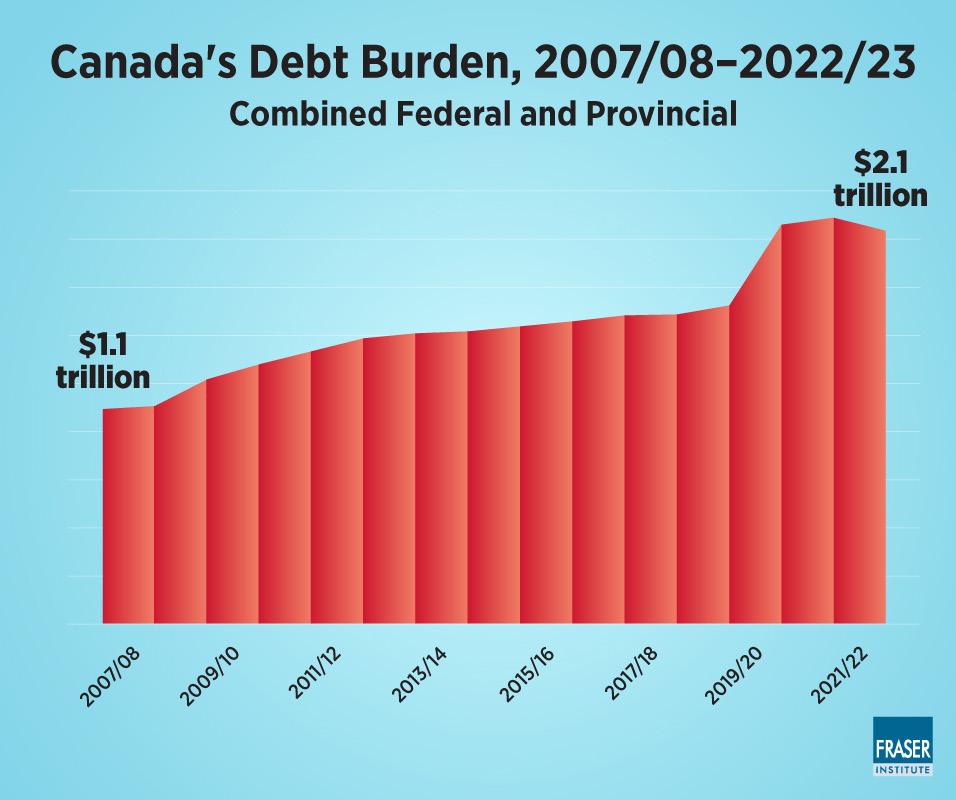
INFOGRAPHIC
12 FRASERINSTITUTE.ORG | CANADIAN STUDENT REVIEW
IF WE’RE NOT READY, IMMIGRATION COMES WITH HEAVY COSTS LIVIO DI MATTEO
Welcoming more than 500,000 immigrants a year by 2025 has raised concerns about whether Canada can keep up, especially with housing infrastructure. There’s also the question about whether immigration is the economic driver it’s been touted to be, and its potential for diminishing returns Nevertheless, 406,000 immigrants in 2021 was the highest total since 1913 (which was 400,900) and in 2022 immigration hit 431,645.
The first figure plots annual immigration to Canada going back to 1852 (with 1852 to 1866 really just measuring immigration to Ontario and Quebec— then known as the Province of Canada).
The high absolute totals notwithstanding, the current migration boom is actually rather modest by historical standards when considered as a share of population (as illustrated in the second figure, which covers the period between 1867 and 2022).

THE FRASER INSTITUTE BLOG WINTER 2023 13
Annual immigration presently represents slightly more than 1 percent of our population. Previous boom eras saw annual migration flows peak at 3 percent in 1883, 4 percent in 1907, 5.1 in 1912, and 5.3 percent 1913—the largest peaks (again, as a share of the population) at the time.

The equivalent today would mean nearly 2 million immigrants a year—four times our target by 2025. The anticipated boom as a share of population is actually rather modest by historical standards and more likely to resemble that of the 1920s or 1950s, but our ability to deal with this level of immigration today is the key question.
The composition of our immigration has changed, with earlier waves emphasizing unskilled labour that went into our resource and goods-intensive industries. Our current system with its point system emphasizes high-skilled and educated labour that is in demand in our more serviceand knowledge-intensive economy. An unskilled immigrant arriving in Canada in 1912 came during a national development and construction boom driven by prairie settlement when the country’s national investment-output ratio was soaring at upwards of 30 percent of GDP. Then, new arrivals who so desired and were willing to move out west could also expect to receive a land grant of hundreds of acres of prairie land.
Today’s more skilled and educated immigrants face a different environment. While their services
1 As of June 5th, 2022.
as skilled workers are in demand given the national labour shortage, they face high housing prices, goods and services shortages, more than $2,000 a month rent for a one-bedroom apartment, crowded roads, and limited public transit. Today, we seem to struggle to maintain our crumbling infrastructure, and our investmentoutput ratio has been in the doldrums for decades, languishing at slightly more than 20 percent of GDP. Without accompanying business investment, increasing our labour supply will lead to diminishing returns and lower per-capita income growth. And much of the immigration is still coming to three key areas—Vancouver, Toronto, and Montreal—further taxing infrastructure in those cities.
Immigration has its benefits. But immigration that expands beyond the capacity of the economy to accommodate it comes with costs. That’s the real challenge we face. Solving labour shortage issues rooted in an aging population with a quick-fix immigration boom—absent a credible ability to expand capacity and infrastructure and business incentives—is a short-sighted “let them come and hope we build it” philosophy. We don’t do ourselves—or newcomers, for that matter— any favours.
The solution is to ramp up our ability to accommodate needed immigrants as we’ve been able to do in the past.
FRASERINSTITUTE.ORG | CANADIAN STUDENT REVIEW 14
IMMIGRATION THAT EXPANDS BEYOND THE CAPACITY OF THE ECONOMY TO ACCOMMODATE IT COMES WITH COSTS

Livio Di Matteo is a Fraser Institute senior fellow and professor of economics at Lakehead University in Thunder Bay, Ontario, where he specializes in public policy and finance, health economics, and economic history. His most recent work examines value for money in health care spending and the drivers and sustainability of health care spending; fiscal economic history; and the historical evolution of economic inequality in Canada and internationally. Prof. Di Matteo is a member of the CIHI National Health Expenditure Advisory Panel and a contributor to the Fraser Institute’s blog, as well as his own policy blog, Northern Economist 2.0. His op-eds have appeared frequently in many newspapers across Canada including the Globe and Mail, National Post, Financial Post, Toronto Star, Winnipeg Free Press, Waterloo Region Record, and Hamilton Spectator. He has been listed in Canada’s Who’s Who since 1995 and holds a Ph.D. from McMaster University, an M.A. from the University of Western Ontario, and a B.A. from Lakehead University.

WINTER 2023 15
A REVIEW OF SOCIALISM SUCKS: TWO ECONOMISTS DRINK THEIR WAY THROUGH THE UNFREE WORLD SAMANTHA CARDENAS ARANGUREN
Currently some millennials and younger generations are leaning towards a dangerous idea that has been gaining popularity lately: that socialism is a favourable alternative for resolving the inequality and injustice that they consider to be the byproduct of capitalism. The problem with this blind support of socialism is that none of those advocating it seem to know what it is because they have not been unfortunate enough to live through it.
Robert Lawson and Benjamin Powell’s Socialism Sucks provides a refreshing and honest perspective on the consequences of socialism. The book is a captivating and humorous narrative by two economists who are using their first-hand travel experiences to explain why romanticizing socialism is misguided—it is a notion touted by people who have never experienced what it is to be a true victim of socialism.
The authors take readers along on an informative and extremely entertaining journey to nine countries that hold in them the harsh truths about why socialism can only ever be an unreachable
illusion rather than a sound economic system. They show you through vivid anecdotes that socialism is not characterized by a picture of equality with everyone living out the American dream. It is instead a tragic account of people traveling to the border to buy their necessities and risking their lives in the process, as they do in Venezuela, or a world in which people fear that the government will send them to concentration camps if they are found to be dissidents, as is the case in North Korea.
If socialism was as utopian in practice as it sounds in theory, perhaps its current supporters would be right to idealize it. But Lawson and Powell show us how the destructive nature of socialism has robbed Cuba of its variety of produce and its people of their incentive to innovate and launch their own businesses; and how socialism has completely destroyed any opportunity for North Koreans to live out their life without being in constant fear of losing it.
Lawson and Powell’s Socialism Sucks deserves to be recognized for showing readers how the only outcome of socialism is “political tyranny
BOOK REVIEW
16 FRASERINSTITUTE.ORG | CANADIAN STUDENT REVIEW
and economic destruction.” Those who support socialism because they have fallen for its false veneer of equality for all must see the system for what it really is and how it affects the greater society; this book shows audiences exactly that. It is a genuine record of experience that is much more effective in showing people the harsh truth than is any technical book about economics or statistics. The two authors accompany the economic theories they convey with first-hand observations that prove the arguments against socialism they are communicating.
On top of being a highly educational read, Socialism Sucks is also very captivating. Readers are warned against repeating the same mistakes as the socialist countries mentioned in the narrative—countries where people have inadvertently allowed a socialist government to irrevocably ruin their lives because they trusted a romanticized ideal instead of the hard facts.
Socialism Sucks: Two Economists Drink Their Way

Through the Unfree World by Robert Lawson and Benjamin Powell, published by Regnery, is available through Amazon and other retailers.
Samantha Cardenas Aranguren is a finance major at the University of British Columbia. Samantha is a former competitive public speaker and debater and speaks 4 languages, which motivated her to pursue a concentration in international business during her undergrad. Originally from Venezuela, she has always been extremely passionate about policy and economic issues which is why she plans on pursuing a Master’s in public policy. She loves to connect with new people to talk about different topics including travelling, cinema, and literature and can always be reached at samantha.cardenas.a13@gmail.com

WINTER 2023 17
THE LESSON I HAVE TO TEACH IS THIS: LEAVE ALL CREATIVE ENERGIES UNINHIBITED. MERELY ORGANIZE SOCIETY TO ACT IN HARMONY WITH THIS LESSON. LET SOCIETY’S LEGAL APPARATUS REMOVE ALL OBSTACLES THE BEST IT CAN. PERMIT THESE CREATIVE KNOW-HOWS FREELY TO FLOW. HAVE FAITH THAT FREE MEN AND WOMEN WILL RESPOND TO THE INVISIBLE HAND. THIS FAITH WILL BE CONFIRMED. I, PENCIL, SEEMINGLY SIMPLE THOUGH I AM, OFFER THE MIRACLE OF MY CREATION AS TESTIMONY THAT THIS IS A PRACTICAL FAITH, AS PRACTICAL AS THE SUN, THE RAIN, A CEDAR TREE, THE GOOD EARTH.
— LEONARD E. READ, I, PENCIL: MY FAMILY TREE AS TOLD TO LEONARD E. READ READ THE FULL TEXT HERE.

QUOTE WALL 18
MAKING THE WORLD RICHER BY HONOURING ENTREPRENEURS ART CARDEN
Contrary to what you’ve probably heard for the last five decades, more people are a blessing, not a curse. Under the right conditions, they bring more to the table than they take, and on net, make the world a better and more humane place.
Note the operative phrase, though—under the right conditions. As economic historian Deirdre McCloskey and I argue in our contribution to the Fraser Institute’s essay series, Demographics and Entrepreneurship: Mitigating the Effects of an Aging Population, leaving people alone to buy, sell, trade, experiment, innovate, succeed, and fail helped convert a world where almost every life was solitary, poor, nasty, brutish, and short into a world where the World Bank estimates that as of 2013 only 10.7 percent of the world’s population lived in “extreme poverty,” defined as less than US$1.90 per day.
As recently as 1990, that number was 35 percent. It’s a smaller percentage of a much larger population, and even the absolute number of the world’s extremely poor has fallen, from 1.85 billion in 1990 to 767 million in 2013.
The Great Enrichment of the human species has been relatively sudden and relatively recent, historically speaking. Since the caves, our ancestors lived in grinding poverty. Then, around 1750 or so, in a dysfunctional backwater of the Eurasian landmass, people stumbled into sustained economic growth. It happened because we learned how to innovate and because we learned how to love innovators and entrepreneurs.
In short, the West got rich and the rest started following because of sudden changes in how we write, think, and speak about entrepreneurs. Instead of seeing innovation as troublesome heresy or an offense against the God-ordained social order, people came to see innovation as something that was positively virtuous. Or at least tolerable.
People adopted what my coauthor McCloskey has termed the Bourgeois Deal: “leave me alone, and I’ll make you rich.” It stands in sharp contrast to what she calls the Aristocratic Deal, or “honour me, an aristocrat and your better by the accident of birth, do as I say, pay your taxes under threat of prison or death or worse. Think not that you have the right
THE FRASER INSTITUTE BLOG WINTER 2023 19
THE WEST GOT RICH AND THE REST STARTED FOLLOWING BECAUSE OF SUDDEN CHANGES IN HOW WE WRITE, THINK, AND SPEAK ABOUT ENTREPRENEURS.

1 As of June 5th, 2022.
FRASERINSTITUTE.ORG | CANADIAN STUDENT REVIEW 20
to seek ‘protection’ from another sovereign. Go forth, do battle, and shed others’ blood and your own in my name and for my glory, and by the third act of our little drama I at least will not have slaughtered you.”
Innovate, under those circumstances? What’s the point, if one’s life and destiny and living and dying were controlled from above? Why, when doing so was rebellion against your lot in life—having been made to suffer, like Akira Kurosawa’s peasants and George Lucas’ droids?
Things began to change slowly, surely, haltingly, and imperfectly in the eighteenth century. People began, as a result of a confluence of happy accidents in Europe beginning with the Protestant Reformation in 1517, to afford liberty and dignity to the bourgeoisie—to the innovators, the buyers, the sellers, the people who flooded England with “a wave of gadgets.”
This isn’t to say that the bourgeoisie somehow became more ethical—far from it. Rather, people started to tolerate and eventually celebrate the virtuous parts of bourgeois life. Consider how
we honour one of those most bourgeois of pastimes—getting a good deal on something. Which crowned head or noble of the sixteenth century would have been thought especially praiseworthy for getting a good deal on socks or peanut butter? And yet we routinely applaud and imitate the virtues of thrift and prudence when our friends and families display them.
And thus do more people become a blessing rather than a curse. Esteem for bourgeois prudence and thrift is esteem for attributes that get us more and better out of progressively less and less. Combining esteem for these virtues, with what the economist Julian Simon called the Ultimate Resource (the human mind), has unleashed waves of innovation making it possible for us to sustain ever-larger populations at everhigher standards of living.
It’s a process that shows no signs of stopping, as long as we keep our ethical wits about us and continue to celebrate—or at least tolerate— innovation and entrepreneurship.
Art Carden is a professor of economics at Samford University’s Brock School of Business. He is also a senior fellow with the American Institute for Economic Research, a research fellow with the Independent Institute, and co-editor of the Southern Economic Journal. His research on massmarket retailers, economic history, and the history of economic ideas has appeared in journals like the Southern Economic Journal, Journal of Urban Economics, Public Choice, and Contemporary Economic Policy. He is a contributor to Forbes.com, and his commentaries and other articles have appeared in USA Today, Productive!, and many other outlets. He earned a B.S. and an M.A. from the University of Alabama and an A.M. and Ph.D. from Washington University in Saint Louis. Before joining the faculty at Samford, Art taught economics at Rhodes College in Memphis, Tennessee. His first book, co-authored with Deirdre McCloskey and titled Leave Me Alone and I’ll Make You Rich: How the Bourgeois Deal Enriched the World, was published by the University of Chicago Press in 2020. He lives in Birmingham, Alabama, with his wife and three children.

WINTER 2023 21
EXPLORE PUBLIC POLICY ISSUES WEBINAR RECORDINGS

Our Explore Public Policy Issues webinars are now available on demand. Below is a short list of recordings of a few past presentations. To learn more, and to register for our live webinars next semester, visit www.freestudentseminars.org.
The Economics of Love and Dating
Ninos Malek

Ninos Malek provides some hot tips and tricks on how to make the most of your love life, just by learning the basics of economics.
Link to Ninos Malek Recording
Free Market Conservation in Action
Laura Huggins
Laura Huggins explains the roles of private landowners and privately funded wildlife reserves in the struggle for species conservation.
Link to Laura Huggins Recording

FRASERINSTITUTE.ORG | CANADIAN STUDENT REVIEW 22
Canadian STUDENT REVIEW
CHECK US OUT…
CANADIAN STUDENT REVIEW IS OFFERED FREE TO STUDENTS ACROSS CANADA.

TO RECEIVE A SUBSCRIPTION, OR TO WRITE TO US ABOUT ARTICLES YOU READ IN THIS PUBLICATION, E-MAIL: STUDENT@FRASERINSTITUTE.ORG
CLICK HERE TO RECEIVE A SUBSCRIPTION TO OR INFORMATION ABOUT:
CANADIAN STUDENT REVIEW: A COLLECTION OF ARTICLES FROM BOTH ECONOMISTS AND STUDENTS.
EVENTS: ATTEND ONE OF OUR “EXPLORE PUBLIC POLICY ISSUES” SEMINARS ACROSS CANADA
FRASER INSIGHT: A FRASER INSTITUTE REVIEW OF PUBLIC POLICY IN THE UNITED STATES.
FRASER UPDATE: THE NO. 1 SOURCE FOR FRASER INSTITUTE NEWS; CONVENIENT AND CONCISE.
VOLUNTEERING: EMAIL STUDENT@FRASERINSTITUTE.ORG FOR FURTHER INFORMATION ABOUT VOLUNTEER OPPORTUNITIES
Like us on Facebook through our website or visit: facebook.com/EducationPrograms
Get daily updates from @FraserInstitute


































